The Oriental Stork (Ciconia boyciana) is a captivating bird species native to East Asia, known for its striking white plumage, black wingtips, and impressive size.
As an endangered species, the Oriental Stork symbolizes the delicate balance between human development and wildlife conservation.
With its habitat threatened by habitat loss, pollution, and hunting, efforts to protect and preserve this majestic bird are crucial for survival.
Understanding the Oriental Stork’s biology, behavior, and ecological significance is essential for fostering appreciation and implementing effective conservation strategies. Stay focused.
Pick Out of Oriental Stork
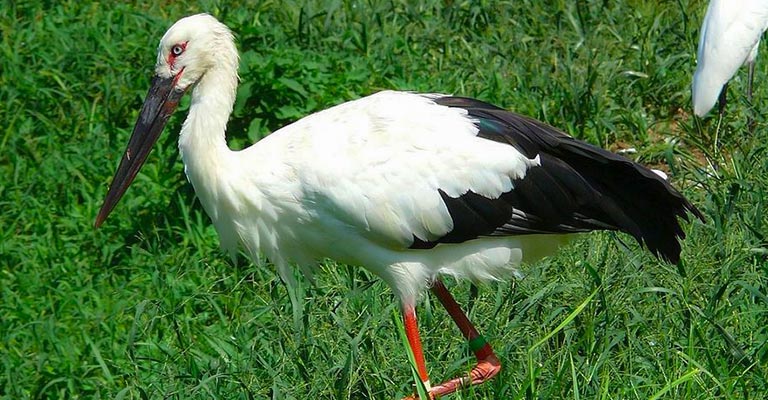
The Oriental Stork (Ciconia boyciana) is a majestic and rare bird native to East Asia, mainly found in China, Russia, Korea, and Japan.
Identifying this magnificent species requires attention to several distinctive characteristics:
Size and Appearance
The Oriental Stork is a large bird, standing around 100-115 cm tall, with a wingspan of 195-215 cm.
Its striking white plumage, long neck, and legs make it easily distinguishable. During the breeding season, adults develop black markings on their wings and a red spot on their lower mandible.
Long, Slender Bill
One of the most prominent features of the Oriental Stork is its long, dagger-like bill, which is slightly curved downwards. This bill is well-adapted for catching fish, amphibians, and small mammals, its primary diet.
Black Wing Tips
During flight, the Oriental Stork displays black wingtips, contrasting sharply against its otherwise white plumage. This distinctive pattern aids in its identification, mainly observed from a distance.
Distinctive Flight
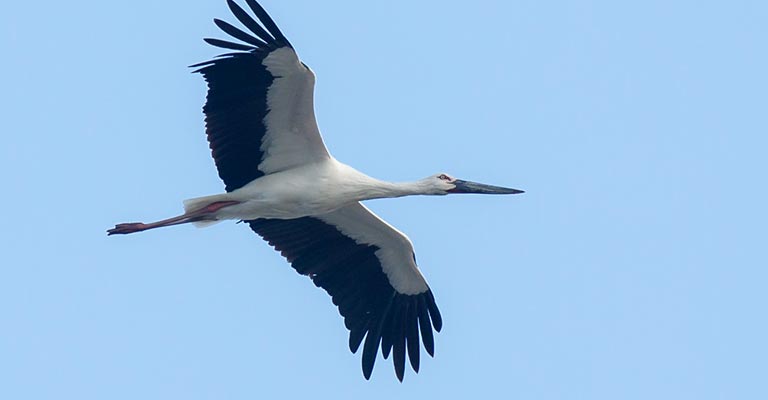
When in flight, the Oriental Stork exhibits slow, steady wingbeats with its neck outstretched. Its large size and graceful flight make it stand out among other birds in its habitat.
Habitat and Range
Oriental Storks are typically found in wetlands, marshes, and riverside habitats. They prefer shallow water bodies where they can forage for food efficiently.
While they primarily breed in East Asia, they may migrate to warmer regions during the winter.
Behavior
These storks are often observed wading in shallow waters, patiently searching for prey. They are known for their solitary nature, though they may gather in small groups, especially during migration or at communal roosting sites.
Vocalizations
While generally silent outside the breeding season, Oriental Storks may emit low, guttural calls or bill clattering during courtship displays or territorial disputes. These vocalizations can help identify their presence in an area.
Conservation Status
Due to habitat loss, pollution, and hunting, the Oriental Stork is listed as Endangered on the IUCN Red List.
Conservation efforts, such as habitat restoration and captive breeding programs, are underway to protect and conserve this species.
Identifying the Oriental Stork involves recognizing its large size, white plumage with black wingtips, distinctive bill shape, habitat preferences, and behavior.
While its striking appearance and graceful flight make it a captivating sight, efforts to conserve its dwindling population are crucial to ensuring the survival of this iconic species in the wild.
Taxonomy of Oriental Stork
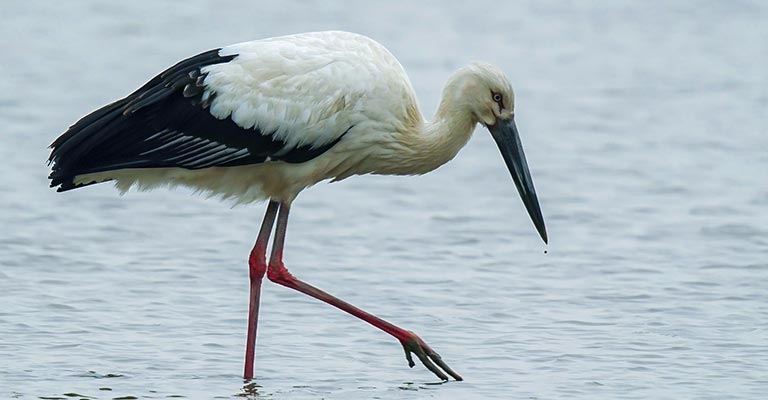
The below table is detailing the taxonomy of the Oriental Stork:
| Domain | Eukaryota |
| Kingdom | Animalia |
| Phylum | Chordata |
| Class | Aves |
| Clade | Aequornithes |
| Order | Ciconiiformes (Bonaparte, 1854) |
| Family | Ciconiidae |
| Genus | Ciconia |
| Species | C. boyciana |
The Oriental Stork (Ciconia boyciana) belongs to the family Ciconiidae, which encompasses various species of large, long-legged birds commonly known as storks.
Within the order of Ciconiiformes, storks are characterized by their distinctive appearance, including long necks, legs, and bills. The Ciconia genus includes several stork species across Europe, Asia, and Africa.
The Oriental Stork is classified explicitly under the species Boyciana, with its scientific name derived from the Russian ornithologist Wilhelm von Boycik.
Taxonomically, the Oriental Stork is part of the kingdom Animalia, phylum Chordata, class Aves (birds), and order Ciconiiformes highlighting its evolutionary relationship with other avian species and its place within the broader diversity of life on Earth.
Oriental Stork Life History
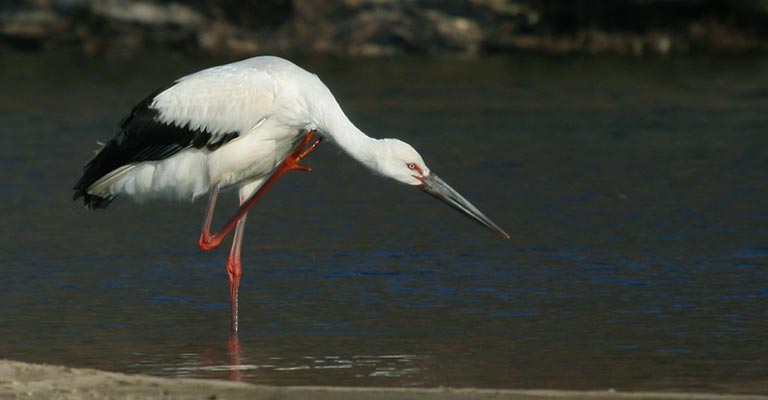
The Oriental Stork (Ciconia boyciana) is a fascinating bird with a rich life history shaped by its interactions with the environment and human activities.
From its feeding habits to breeding behaviors and efforts for conservation, every aspect of its life offers insights into the challenges and resilience of this magnificent species.
Food
Oriental Storks primarily feed on a diet of fish, amphibians, and small mammals. They often wade in shallow waters, using their long, slender bills to catch prey precisely.
Their diet plays a crucial role in maintaining the delicate balance of aquatic ecosystems, making them critical indicators of environmental health.
Habitat
These storks inhabit various wetland habitats, including marshes, riversides, and coastal areas. They prefer areas with shallow water bodies where they can forage easily.
However, habitat loss due to urbanization, agriculture, and pollution has significantly reduced suitable habitats for the Oriental Stork, threatening its survival.
Range Map
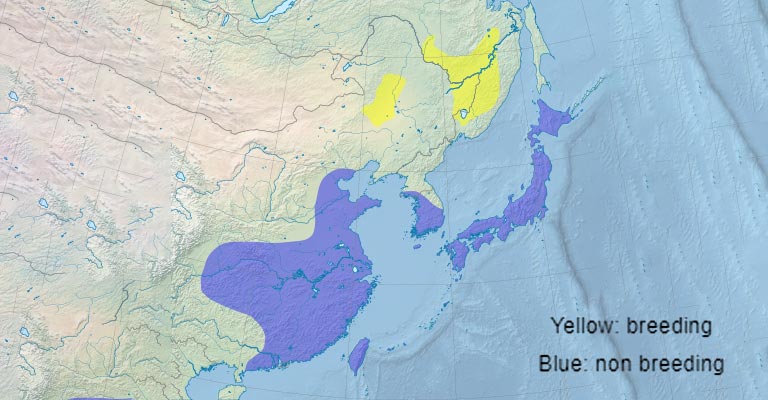
The range of the Oriental Stork extends across East Asia, encompassing parts of China, Russia, Korea, and Japan.
While they primarily breed in these regions, they may migrate to warmer areas during winter, seeking suitable feeding grounds.
Breeding
Breeding season for Oriental Storks typically occurs in the spring and summer months.
They build large stick nests high in trees, often in dense forests near water sources. Mated pairs engage in elaborate courtship displays, including bill-clattering and aerial acrobatics.
Females usually lay a clutch of 2-5 eggs, which both parents take turns incubating. After hatching, the chicks are cared for diligently by both parents until they are ready to fledge.
Diseases and Treatment
Like many bird species, Oriental Storks are susceptible to various diseases, including avian influenza and habitat-related illnesses.
Conservation efforts often include monitoring for disease outbreaks and providing medical treatment when necessary.
Veterinarians and conservationists work tirelessly to prevent and mitigate the impact of diseases on wild populations.
Conservation
Conservation of the Oriental Stork is of paramount importance due to its endangered status. Habitat loss, pollution, and hunting pose significant threats to its survival.
Conservation efforts focus on habitat restoration, captive breeding programs, and community education to raise awareness about the importance of protecting this iconic species.
Collaborative initiatives involving governments, NGOs, and local communities are crucial for ensuring the long-term survival of the Oriental Stork and the preservation of its habitat.
The life history of the Oriental Stork is a testament to the interconnectedness of species and ecosystems.
By understanding and addressing the challenges it faces, we can work towards a future where this majestic bird continues to grace our wetlands and inspire generations to come.
Nesting Habit of Oriental Stork
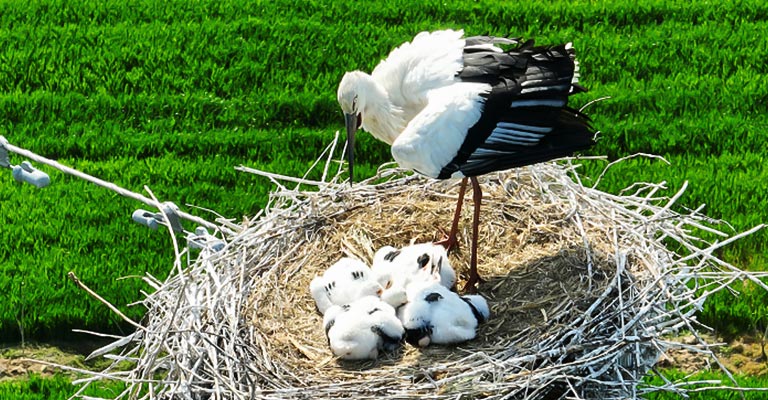
Check out the table below detailing the nesting habits of the Oriental Stork:
| Nesting Details | Facts |
| Clutch Size | 2-5 eggs |
| Number of Broods | Usually 1 per breeding season |
| Egg Length | Approximately 75-95 mm |
| Egg Width | Approximately 53-66 mm |
| Incubation Period | Around 33-34 days |
| Nestling Period | Approximately 50-60 days |
| Egg Description | Creamy-white with a slightly rough texture |
| Nest Construction | Large stick nests built high in trees |
| Nest Location | Often in dense forests near water sources |
| Parental Care | Both parents share incubation and chick rearing |
| Nestling Development | Both parents share incubation and chick-rearing |
These nesting details provide insights into the reproductive behavior and parental care strategies of the Oriental Stork, highlighting its adaptation to its environment and life history.
Oriental Storks construct large stick nests high in trees, typically in dense forests near water sources.
During the breeding season, mated pairs engage in elaborate courtship displays before the female lays a clutch of 2-5 creamy-white eggs.
Both parents are responsible for incubating the eggs, which takes around 33-34 days. After hatching, the chicks are semi-altricial, relying on their parents for warmth and food.
The nestling lasts approximately 50-60 days, during which the parents diligently care for their offspring until they are ready to fledge. This nesting strategy ensures the survival and growth of the Oriental Stork population.
10 Fun Facts About Oriental Stork
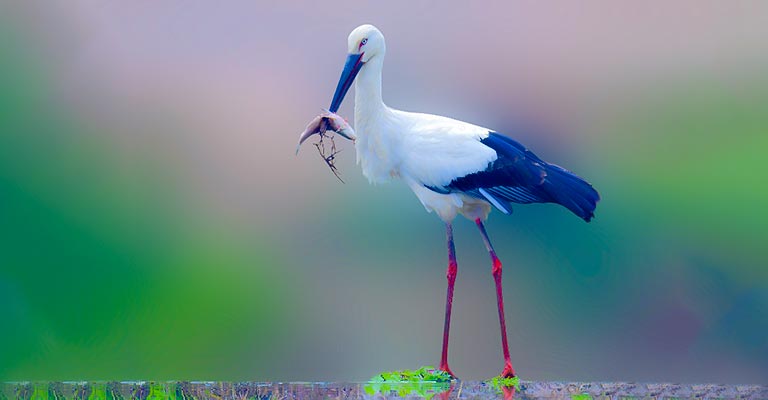
The Oriental Stork (Ciconia boyciana) is a captivating bird with a wealth of intriguing characteristics that make it a subject of fascination for bird enthusiasts and conservationists alike.
Here are 10 fun facts about this majestic species:
- Endangered Status: The Oriental Stork is classified as Endangered on the IUCN Red List, with only a few hundred individuals remaining in the wild. Habitat loss, pollution, and hunting have contributed to its decline.
- Large Size: Among storks, the Oriental Stork stands out for its impressive size, reaching heights of up to 115 cm and wingspans of 195-215 cm.
- Distinctive Appearance: With its striking white plumage and contrasting black wingtips, the Oriental Stork cuts a majestic figure in its wetland habitats.
- Longevity: Oriental Storks can live for several decades in the wild, with individuals known to survive for over 20 years.
- Migration: While they primarily breed in East Asia, Oriental Storks may migrate to warmer regions during winter, seeking suitable feeding grounds.
- Courtship Displays: Mated pairs engage in elaborate courtship displays, including bill-clattering and aerial acrobatics, to strengthen their bond before breeding.
- Parental Care: Both parents are responsible for incubating the eggs and caring for the chicks until they are ready to fledge, demonstrating a high level of parental dedication.
- Vocalizations: Oriental Storks are generally silent outside the breeding season but may emit low, guttural calls or bill clattering during courtship displays or territorial disputes.
- Habitat Preferences: They inhabit various wetland habitats, including marshes, riversides, and coastal areas, where they forage for fish, amphibians, and small mammals.
- Conservation Efforts: Conservation initiatives, such as habitat restoration and captive breeding programs, are underway to protect and conserve the Oriental Stork and its habitat, ensuring its survival for future generations.
The Oriental Stork’s remarkable characteristics and status as an endangered species underscore the importance of conservation efforts to safeguard its future and preserve its place in the natural world.
Wrapping Up
The Oriental Stork is a majestic bird and a symbol of resilience and conservation efforts.
Despite its elegant appearance, the Oriental Stork faces significant threats due to habitat loss, pollution, and hunting, highlighting the urgent need for conservation efforts to ensure its survival in the wild.
Its fascinating characteristics, from its distinctive appearance to its intricate nesting habits and endangered status, highlight the importance of preserving its habitat and ensuring its survival for future generations.
By understanding and appreciating the Oriental Stork’s role in the ecosystem, we can work towards creating a sustainable future where this iconic species continues to thrive in its natural environment. Thank you for your continuous support.